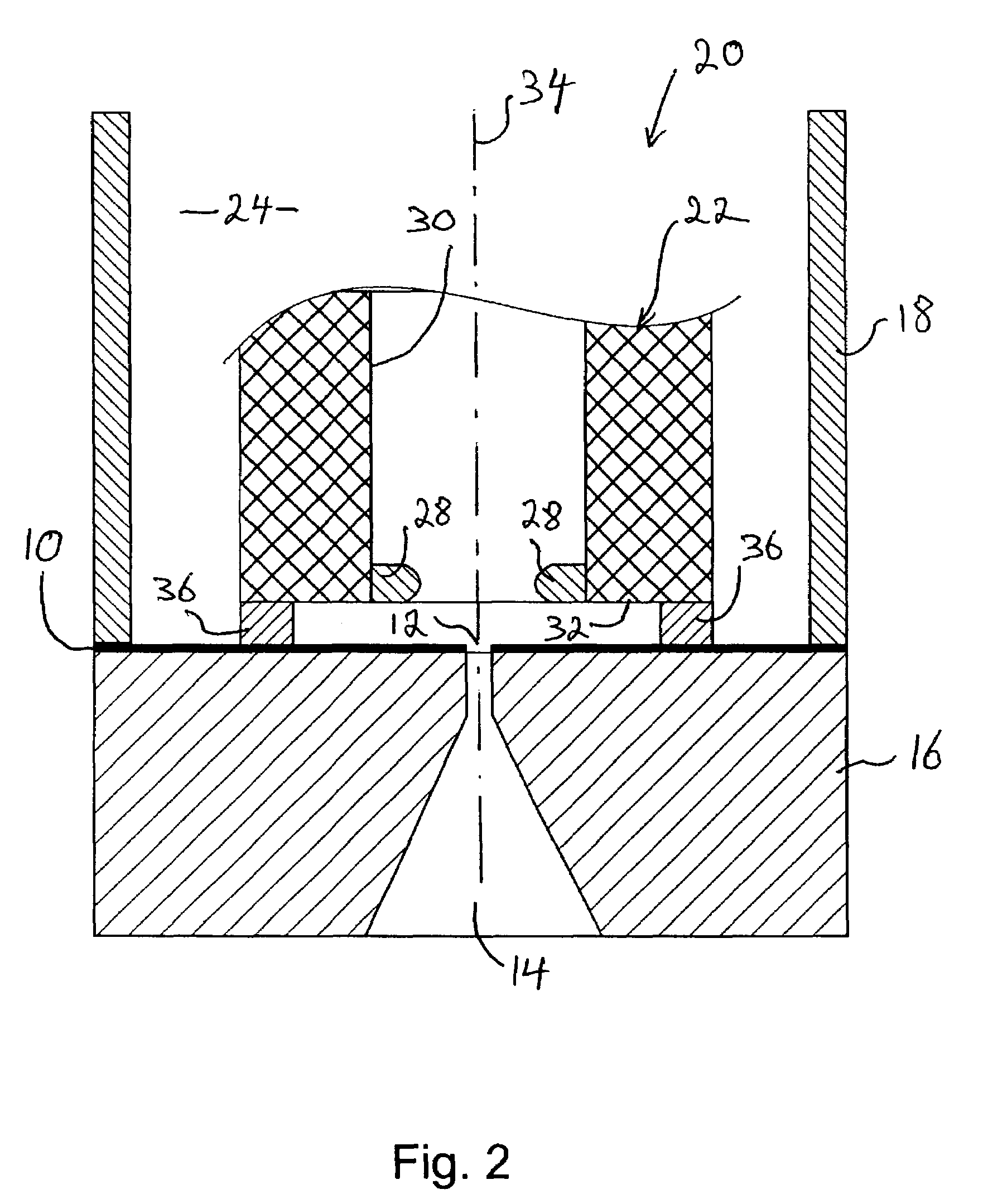Detachable cell-delivery system for patch-clamp unit
- Summary
- Abstract
- Description
- Claims
- Application Information
AI Technical Summary
Benefits of technology
Problems solved by technology
Method used
Image
Examples
Embodiment Construction
[0031]An important aspect of this invention lies in the concept of using a cell-positioning device incorporated into a cell-delivery unit that is detachable from the patch-clamp component of a high-throughput electrophysiological testing assembly. Another aspect is the advantageous use of an electric field to perfect the alignment of the cell-delivery unit with each patch-clamp aperture. Yet another aspect is the use dielectrophoretic forces to precisely position a test cell over the patch-clamp aperture.
[0032]The term perfusion chamber is used herein to refer to a structure that includes an electrode-aperture partition separating an intracellular compartment from an extracellular compartment. The term extracellular solution is used to refer to the fluid in the extracellular compartment. Similarly, the term intracellular solution is used to refer to the fluid in the intracellular compartment.
[0033]The terms cell dispenser and cell-delivery unit are used interchangeably to refer to t...
PUM
| Property | Measurement | Unit |
|---|---|---|
| Electric field | aaaaa | aaaaa |
Abstract
Description
Claims
Application Information
 Login to View More
Login to View More - R&D
- Intellectual Property
- Life Sciences
- Materials
- Tech Scout
- Unparalleled Data Quality
- Higher Quality Content
- 60% Fewer Hallucinations
Browse by: Latest US Patents, China's latest patents, Technical Efficacy Thesaurus, Application Domain, Technology Topic, Popular Technical Reports.
© 2025 PatSnap. All rights reserved.Legal|Privacy policy|Modern Slavery Act Transparency Statement|Sitemap|About US| Contact US: help@patsnap.com



